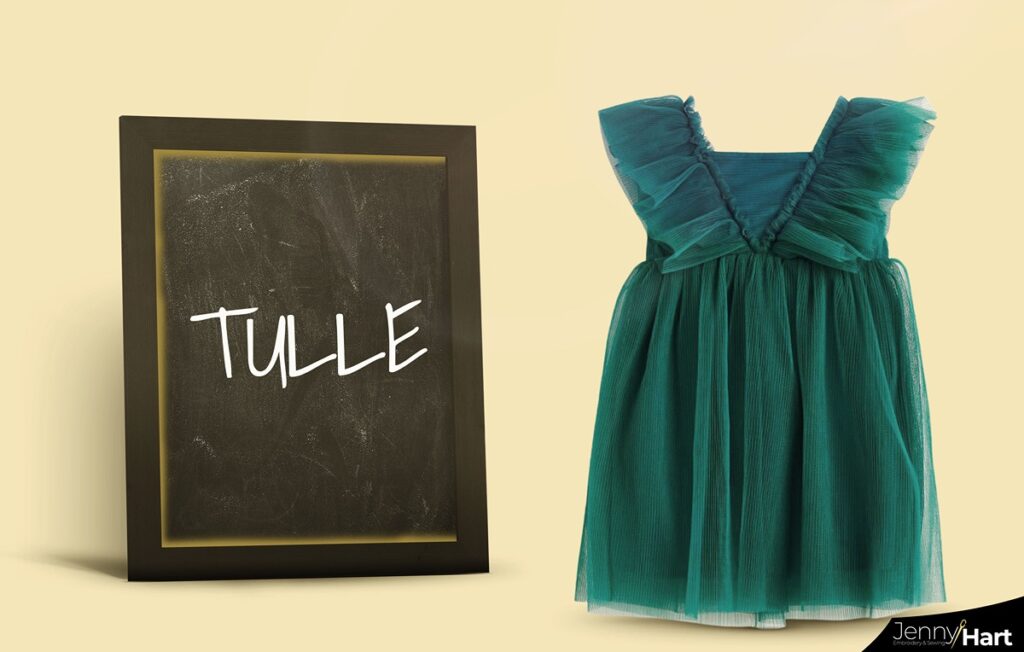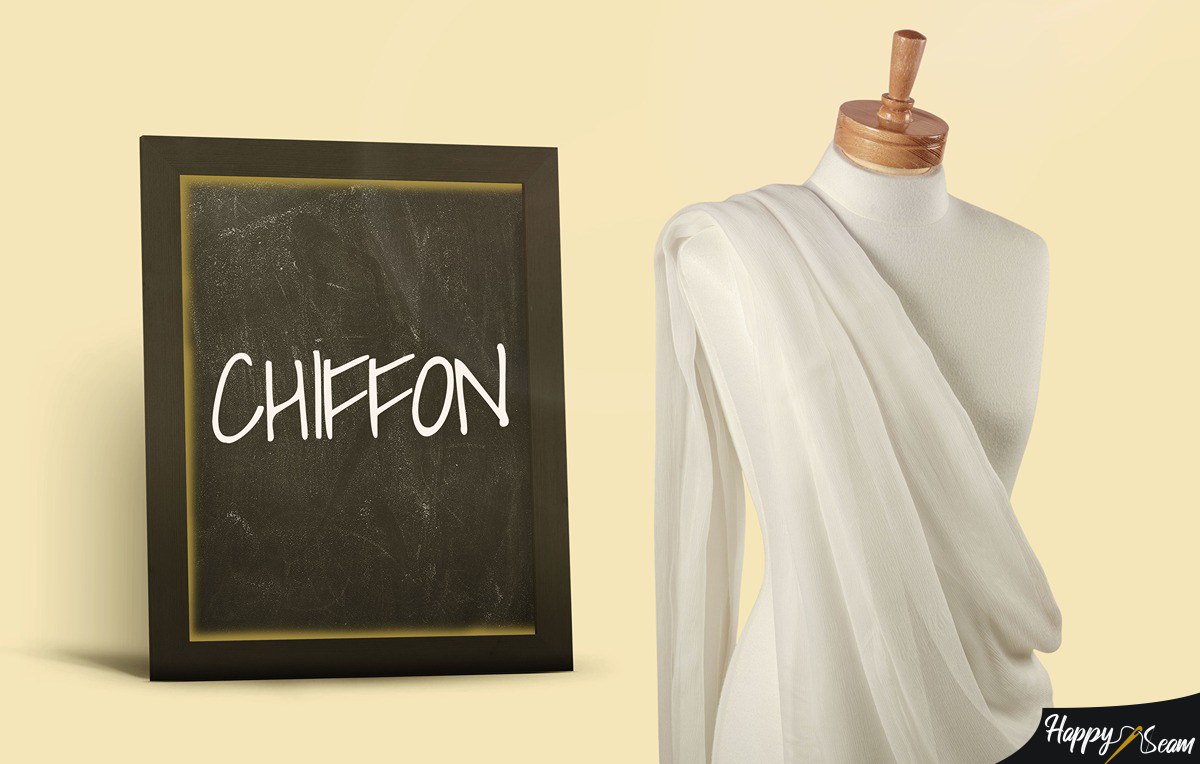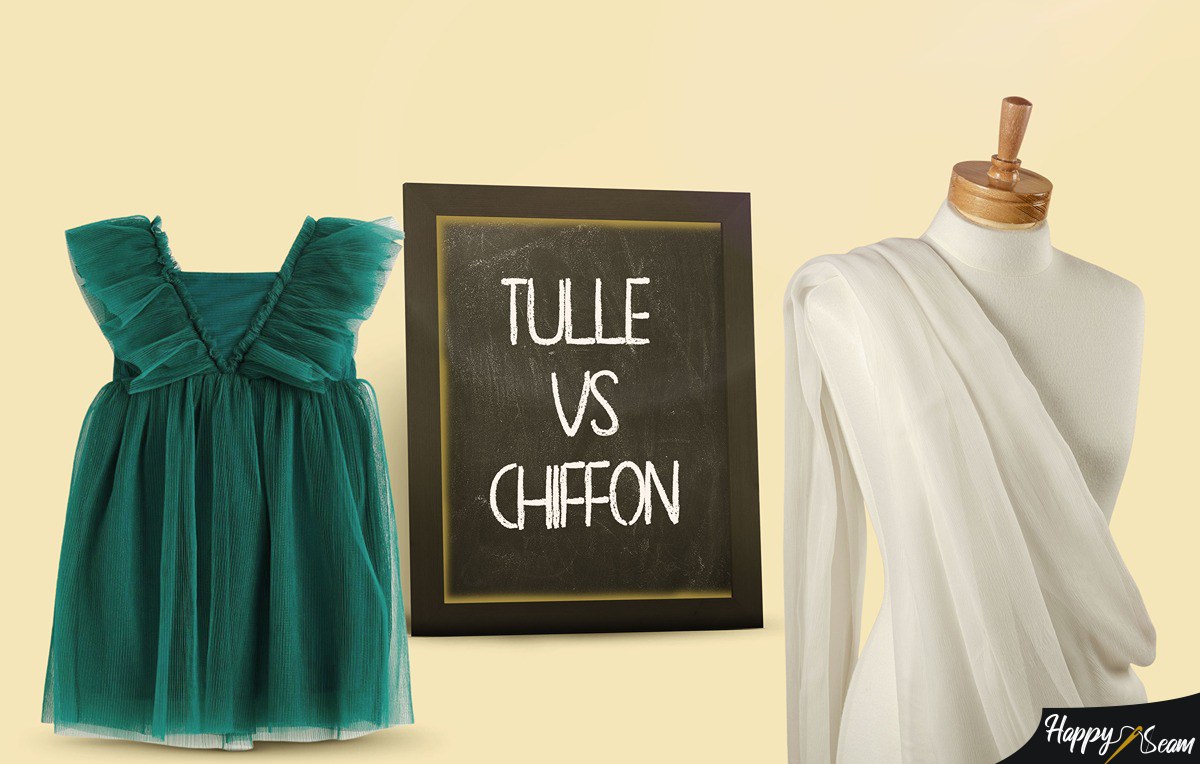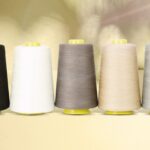As the winter holidays are coming and many different events are popping up, you are probably considering your best outfits, just like everyone else does from now on. Will it be a beautiful tulle skirt? Or maybe charming chiffon bridesmaid dresses? We are here to help you make the right decision. As you are reading this, you are surely asking yourself what the difference is between those two materials, but we will also help you with that.
What makes these two materials different, although they look almost identical? A couple of things make this situation variable; if you keep reading this, you’ll know how to make the perfect decision because what we are going to do is explain all the differences we are sure you are interested in. First things first:
Tulle vs. Chiffon: A Comparison

QUALITY
Tulle is a fabric that can be found in silk or stiffy, depending on which materials it is made from, but mostly it is either silk threads, nylon, or cotton threads. With that in mind, we differentiate three types of tulle such as English tulle, silk tulle, and French tulle, and all 3 of them are used differently depending on what you would like to make from them.
The finest one is the silk tulle, also ranking as the most expensive one. It is made out of 100% silk, and it’s mostly used for long elegant dresses and special occasion outfits like weddings, fashion shows, ballet costumes, different ceremonies, etc. To form the beautiful and elegant netting on the tulle, we must combine a few other fibers that we mentioned at the start of this paragraph.
WHAT ARE THEY BOTH MADE OF
Tulle is originally made from the skillful hands of the French sewers, obviously in France itself. What makes tulle a quality fabric is the finished look that it gives: simple, elegant, lightweight, and you can add many layers without it looking bulky because the material is as thin as It is fine.
Now moving on to chiffon, it can also be made from cotton, silk, and nylon but a plus to this one is that it can also be made from polyester. Also, besides the tulle that is used mostly in fancy tulle bridesmaid dresses or costumes, chiffon can be used in everyday clothing like blouses or scarves, which makes it practical to wear in our daily routines, especially cotton and silk chiffon.
WEARABILITY
They are basically made for warm weather and sunny days. Besides them, polyester chiffon is a little bit uncomfortable if you compare it to the other ones because it feels sticky on your skin.
But the benefit of polyester chiffon is that it’s stiffer than silk one giving you comfort while wearing it by knowing it cannot slide on your skin, it is available in many different weights and sizes, and it is not as expensive as the other ones which is making it the most affordable one.
USAGE
Compared to tulle, chiffon is found to be less see-through and smoother, and because of that, it doesn’t need many layers to cover the transparency. Also, due to this reason, chiffon dresses don’t have a well-defined shape as tulle dresses do, but on the other hand, you can find chiffon fabric in many various colors, unlike tulle.
Tulle has many color options too but not as much as chiffon because chiffon, as we said, is used more in daily life and in many different parts of the fashion industry clothes where the tulle is typically for high-end shows and brides, that’s why it appears in fewer colors. Have you ever been to a wedding where the bride had a neon green tulle wedding dress? Neither did we, and there you go.
CREATIVE WAYS
Also, gift packaging is a way of using tulle, and it is the second most common usage after the fashion industry. The third option is protecting your loved plants that can be attacked by insects by covering them around with this netted fabric, and last but not least, we know that you hate the sound of mosquitoes even more than mosquitoes themselves, so why not prevent both of this situations by adding the netting on your windows? Ta-Da! Mosquitoes entry is closed.
STYLE&TEXTURE
Since we discussed the most important things before, now it’s time to move on to aesthetics. Depending on what look you would like to have, if you are thinking about the texture of the dress, we present you again the tulle, because it is the softest texture you can add to look even more gorgeous, especially because it looks beautiful in photos and also in real life.
The soft texture will give your outfit a more elegant and discreet look since this fabric is thin and so soft. If you are thinking about adding a more untypical look, you can also express it by adding a tulle gown. Looking forward to having a nicely reviewed shape and voluminous dress, tulle is also the one to go because, as we said, chiffon is unpractical for that usage, unlike tulle. Besides, cloth tulle can be used in decorative ornaments such as bouquets or separated flowers for decorating your office or home since it can be dyed in many colors.
FABRIC’S ORIGIN
Biggest chiffon exporter in China. Once the raw fabrics arrive, China takes care of finishing them. But where do the raw fabrics come from, then? Well, chiffon originated from France, and its meaning in french is ‘rug’ the first ever chiffons were made from just silk which made them so expensive that only high-class people could afford them at that time.
Luckily it’s not 1900 anymore, so you don’t have to worry about affordability that much now, even though it is still considered a luxury textile. Chiffon stands out due to the process it has to go through to be finished, and it takes a couple of steps to do it.
PROCESS
First is untwisting, then preshrinking. After that, we must follow the alkaline reduction from the textile in order to dye it later. After dying it, the material must be softened and passed through antistatic treatment in order to be skin friendly. Tulle also comes from France, and its name is given by a southern French region.
Its manufacturing began in the 18th century when tulle was the center of silk and lace production also. Tulle netting appeared in Parisian ballet in this period because of the floating look that it gives. The process of getting nice tulle fabric can be a little complicated by doing a method called bobbinet – using a weft and warp thread. West wrap it in a certain way till we get to the hexagon shape because this shape helps the thread by stopping the loss of its shape or twisting. This causes tension in the thread, making it stronger.

IN CONCLUSION
Considering those facts, tulle and chiffon are both quality-made fabrics, the only thing is what type of them you will buy depending on what you would like to make with them.
Tulle (silk) is the most prestigious of them all because it is used in high-end fashion shows by many big designers whether it’s a fashion show or a designer runaway collection, or even ballet customized bodysuits. So if you want a charming fancy look, tulle silk is the one for you. Or if you’d like a daily wearable cloth, then you should definitely consider chiffon.
Further Reading
If you enjoyed what you have read so far, you may want to check out some of our other articles. For instance, we have a blog post regarding whether a tailor can make your pants bigger or whether polyester shrinks.
The distinction between sewing and quilting is also discernible.
I graduated from London College of Fashion, and I’ve been working for a Fashion Design company for 10 years. My other hobbies are going to the gym and reading.



